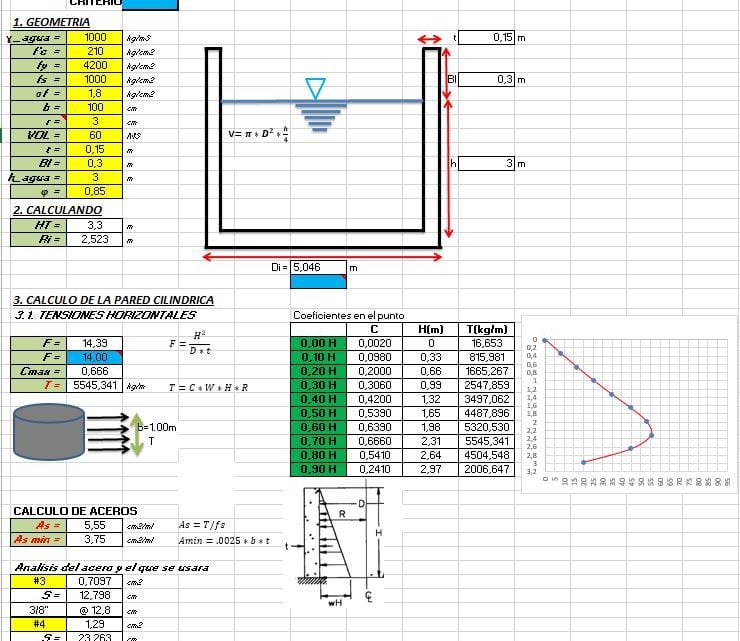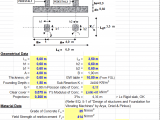
Cylindrical Water Tank Design Spreadsheet
10 May 2025Table of Contents
Cylindrical Water Tank Design Spreadsheet
When it comes to water storage, cylindrical water tanks are the top choice for homeowners, businesses, and industries worldwide. Their simple yet effective design offers a blend of durability, efficiency, and ease of installation that flat, rectangular, or other oddly shaped tanks simply can’t match.
In this article, we’ll explore what makes cylindrical water tanks a preferred solution, their advantages, material options, use cases, and key tips for choosing the right one.
What Is a Cylindrical Water Tank?
A cylindrical water tank is a round-shaped container designed to store water for residential, agricultural, or industrial use. These tanks can be vertical (standing) or horizontal (lying down), depending on the installation requirements. Their shape is not just for aesthetics—it plays a crucial role in how pressure is distributed, which directly impacts tank strength and performance.
Top Benefits of Cylindrical Water Tanks
-
Optimal Pressure Distribution
-
The curved walls of a cylinder evenly distribute water pressure, preventing stress points and reducing the risk of cracks or leaks—especially compared to square or rectangular tanks.
-
-
Space Efficiency
-
Vertical cylindrical tanks make excellent use of vertical space, allowing more capacity in smaller footprints. This is particularly helpful in urban or space-limited installations.
-
-
Strength and Durability
-
The cylindrical shape enhances structural integrity. Whether made of plastic, steel, or concrete, these tanks can withstand harsh environmental conditions.
-
-
Ease of Cleaning and Maintenance
-
With fewer corners and joints, cylindrical tanks are easier to clean, inspect, and maintain—vital for keeping water safe and usable.
-
-
Cost Efficiency
-
Due to their popularity and manufacturing efficiency, cylindrical tanks are often more affordable than custom-shaped tanks with similar capacities.
-
Materials Used in Cylindrical Water Tanks
Cylindrical water tanks come in a variety of materials, each suited for different purposes:
-
Plastic (Polyethylene): Lightweight, UV-resistant, corrosion-proof. Ideal for residential use.
-
Stainless Steel: Extremely durable, hygienic, and rust-proof. Great for long-term industrial applications.
-
Concrete: Best for underground storage; high strength but requires professional installation.
-
Fiberglass: Lightweight and chemical-resistant. Often used for specialized or industrial applications.
Popular Uses for Cylindrical Water Tanks
-
Rainwater Harvesting
-
Agricultural Irrigation
-
Potable Water Storage
-
Fire Suppression Systems
-
Greywater Recycling
-
Industrial Process Water
Their versatility makes them an indispensable asset across a wide range of industries and settings.
How to Choose the Right Cylindrical Water Tank
Before purchasing, consider the following:
-
Capacity Requirements (liters or gallons)
-
Material Compatibility (for the water type you intend to store)
-
Installation Space (vertical vs. horizontal orientation)
-
UV and Weather Resistance
-
Compliance with Local Regulations
-
Brand Warranty and Reviews
Always work with a reputable supplier who offers certified and tested products.
Pro Tip: Vertical vs. Horizontal Cylindrical Tanks
-
Vertical tanks are ideal when floor space is limited and height isn’t an issue.
-
Horizontal tanks are perfect for trailers, trucks, or low-profile installation needs.
Why Cylindrical Tanks Are a Smart Investment
A cylindrical water tank isn’t just a container—it’s an investment in water security, sustainability, and long-term savings. Whether you’re collecting rainwater for a garden or storing thousands of liters for industrial processes, cylindrical tanks offer a tried-and-true design that delivers performance, reliability, and peace of mind.


